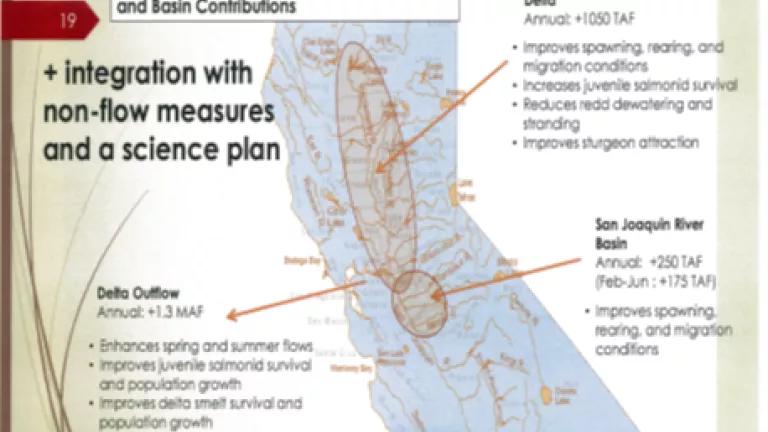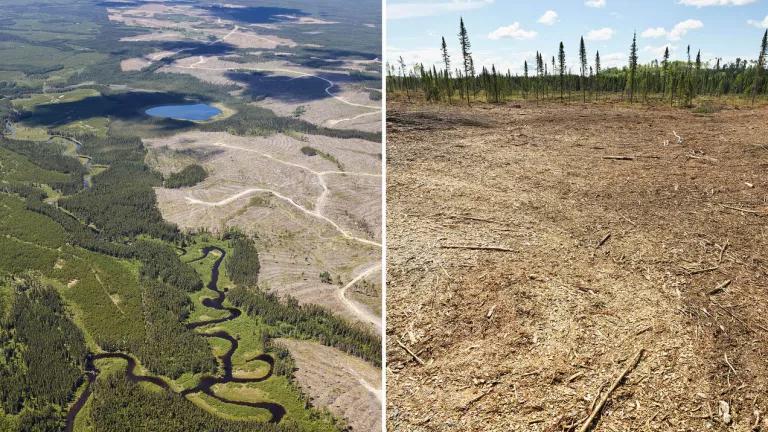
Water is one of the most important natural resources on our planet and it is necessary for the survival of all life. Even more precious is water clean enough to drink, to cook with, and to bathe. Why then, in a state prone to severe droughts, would we use half of our drinking water outdoors? Why would we pump water hundreds of miles from its source, treat it so that it is clean enough to drink, just to spray it on our lawns?
In a state where climate change is projected to lead to more frequent and intense droughts, we must face up to the fact that thirsty grass is no longer appropriate in California.
The lawn is thought to have originated in Europe, which makes sense because the moist, mild climate supports open, close-cut grasslands. Some of the earliest lawns as we've come to know them were the grasslands around medieval castles in France and Britain, kept clear of trees so guards had an unobstructed view. Closely shorn grass lawns, like those in most yards across the United States, first emerged in 17th century England at the homes of large, wealthy landowners. Before lawnmowers, only the rich could afford to hire the many hands needed to scythe and weed the grass, and only the rich could dedicate such resources to a luxury with no productive value - so a lawn was a mark of wealth and status.
Today, lawns are a representation of the American dream - a home with a yard full of green grass and a white picket fence. But in places like California, it's time for that ideal to change.
As our population grows and climate change brings us more frequent and intense droughts with interceding years of heavy rain, our outdoor spaces provide an opportunity not only to stretch our limited resources, but create the climate resilient, locally sustainable communities we'll need to flourish in the years to come. How do we do this?
There are 3 important elements of a sustainable landscape:
- Replace turf with native / climate-appropriate plants
- Retain rainwater and stormwater onsite
- Install meters to measure water use
To make the biggest impact, these elements must be incorporated into state regulations. In California, state regulation of landscape water use is done primarily through the publication of a "Model Water Efficient Landscape Ordinance" (MWELO), which as the name implies, is to be adopted and enforced by local government agencies. However, under state law, if localities fail to adopt this Model Ordinance or something equally stringent, the provisions of the Model Ordinance take on the force of law anyway. So the Model Ordinance is, in fact, a statewide regulation by default - a minimum set of requirements that are applicable in every jurisdiction.
As part of the state's emergency response to the drought, Governor Brown has called for a directive to tighten state rules to make new landscapes more water-efficient. Directive 11 of the April 2015 Executive Order (shown below) requires an update of the MWELO to increase water efficiency in new AND EXISTING landscapes through more efficient irrigation, graywater use, onsite stormwater capture, and by limiting turf. The Department of Water Resources (DWR) has responded with a draft proposal that points the way to better landscapes and water stewardship, but falls short of several needed changes that would transform our turf heavy outdoor spaces to sustainable, pollution reducing, climate-appropriate landscapes.
"11. The Department shall update the State Model Water Efficient Landscape Ordinance through expedited regulation. This updated Ordinance shall increase water efficiency standards for new and existing landscapes through more efficient irrigation systems, greywater usage, onsite storm water capture, and by limiting the portion of landscapes that can be covered in turf. It will also require reporting on the implementation and enforcement of local ordinances, with required reports due by December 31, 2015. The Department shall provide information on local compliance to the Water Board, which shall consider adopting regulations or taking appropriate enforcement actions to promote compliance. The Department shall provide technical assistance and give priority in grant funding to public agencies for actions necessary to comply with local ordinances."
Where the DWR Proposal Falls Short
1. The Water Budget
As the name implies, this is the quantity of water that a new landscape must be designed to stay within. With a reduced water allowance, developers and designers of new landscapes will need to employ more efficient irrigation technology and select plant materials that require less water. The levels proposed by DWR are likely to rule out turf grass in commercial developments, while allowing about 25% of a new landscape to be turf in residential developments.
But with attractive alternatives to water-hungry turf now widely available, the continued installation of ornamental turf in new landscapes has to be seen as a wasteful practice. Functional turf has its place, now and in our future, for playing surfaces and places where people assemble. But turf as an ornamental ground cover should be disallowed in state regulations covering new landscapes, and DWR has stopped short of that goal.

2. Onsite Retention of Stormwater
Preventing rainwater from running off into gutters and into oceans and streams (picking up debris and polluted substances along the way) simultaneously improves water quality and reduces the waste of water that is otherwise shunted away to storm drains. The avoidance of waste requires the treatment of rainwater and stormwater as resources.

On-site retention and infiltration is already required by many stormwater permits applying to large new projects in major cities. By including this requirement in the Model Ordinance, we can ensure that rainwater is put to beneficial use in new developments of all types throughout California. DWR's new draft Model Ordinance encourages, but does not require, rainwater catchment and storm water retention. Unfortunately, previous "recommendations" in the Model Ordinance have not been effective.
Given the magnitude of the state's need for maintaining adequate water supplies and for improving the quality of stormwater discharges, a reasonable requirement for on-site retention for new development just makes sense. A clear standard for retention and infiltration in the Model Ordinance will help ameliorate both the water quality and water availability challenges facing the state. This is an opportunity that should not be missed.
3. Metering Outdoor Water Use

You can't manage what you don't measure. DWR took a positive step by including new requirements for separate measurement of water applied to landscape irrigation. Unfortunately, under the proposed revision, the installation of meters are limited that to larger properties. This requirement MUST apply to all parcels covered by MWELO. The only way a landscape can be managed to ensure that it stays within the water budget to which it was designed is by measuring the amount of water being applied.
Can you imagine trying to manage your finances if you never saw a bank balance? Inexpensive meters are available for this purpose, and the capability for property owners to conveniently read such meters and analyze their data through mobile devices is growing.
While DWR proposes that most new commercial landscapes have meters, the new proposal exempts most residential landscapes from any measurement requirement. Yet residential landscape water use is even larger than commercial landscape use as a share of total urban water usage. Installation of a meter to measure the water used to irrigate new residential landscapes should be required.
We are in the fourth year of an epic drought ... with no end in sight. And we know that we are likely to see more frequent and intense droughts in the future. We must find a way to use our precious and limited drinking water supply more efficiently; and surely using it to water plants that serve no purpose other than aesthetics isn't the best use for half of that supply.
We must make better use of alternative sources such as graywater and rainwater, we must measure what we use, and we must move away from large swaths of turf and toward beautiful landscapes filled with native, drought-resilient plants.
New landscapes are an opportunity to build smarter communities right from the start, and a stronger Model Landscape Ordinance can point the way.



